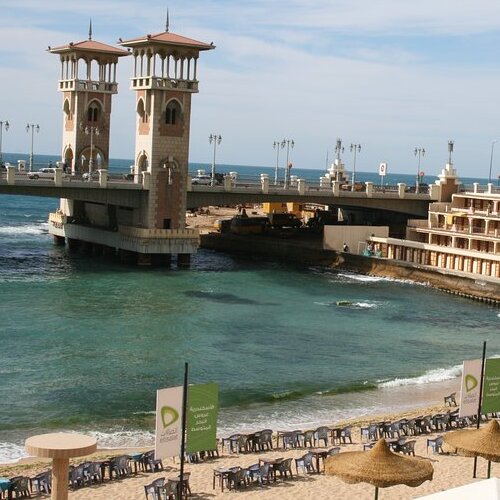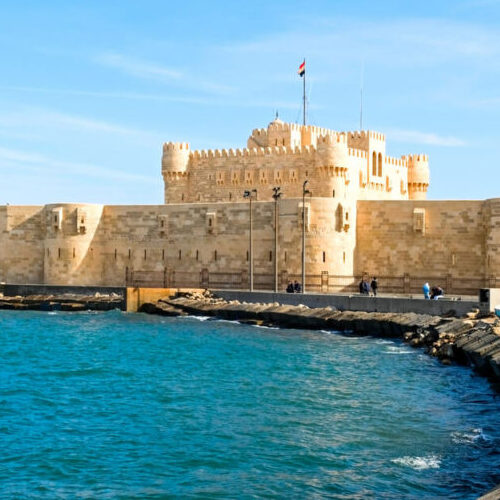No other nation in the world says ‘Welcome’ as often as the Egyptians, and every time, they mean it. While the ancient civilization of Egypt continues to amaze, contemporary Egyptians are equally remarkable.
Pompey’s Pillar
Pompey's Pillar
Pompey’s Pillar, a towering monument that stands as a testament to Alexandria’s storied past, offers a rich narrative steeped in the grandeur of the Greco-Roman era. This majestic structure not only symbolizes the architectural prowess of ancient civilizations but also serves as a cultural bridge connecting modern visitors with the whispers of history.
Location and Majestic Description
Pompey’s Pillar dominates the skyline of Alexandria at a remarkable height of 27 meters (about 88 feet). Crafted from red Aswan granite, a material renowned for its durability and beauty, the pillar exudes an aura of timelessness. It is flanked by two mystical sphinxes, adding an element of solemnity and mystique to the site. These sphinxes guard the monument, creating a visual portal into the ancient world.
Historical Backdrop
Situated amidst the remnants of the once magnificent Temple of Serapeum, Pompey’s Pillar is a surviving link to a complex dedicated to Serapis. This deity, crafted from the syncretic religious imagination of the Ptolemaic period, blended aspects of Greek and Egyptian gods, illustrating the cultural amalgamation characteristic of the era. Although the temple was erected in 297 AD, the pillar itself is shrouded in historical misattribution—it was erroneously named after the Roman general Pompey, who met his tragic end in Egypt in 48 BC. Early travelers to the site mistakenly believed that this grand column marked his burial site.
Architectural and Cultural Significance
The grand column, with its Corinthian capital, stands as a proud relic of the architectural heritage influenced by both Greek and Roman styles. This blend of architectural traditions underlines the cosmopolitan nature of ancient Alexandria, once a melting pot of cultures and a pivotal hub of scholarly and religious activity. Historically, the Serapeum was noted as the second largest religious site in the ancient Roman Empire, a place teeming with pilgrims and scholars.
Symbolism and Modern Connection
Today, Pompey’s Pillar is more than just an ancient monument; it is a symbol of Alexandria’s layered history and its ability to endure through centuries. It offers visitors not only a glimpse into the architectural and spiritual life of the ancient world but also serves as a poignant reminder of Alexandria’s significance in the Mediterranean’s historical and cultural landscape.
Visiting Pompey’s Pillar, therefore, is not just about viewing an ancient stone; it’s about experiencing the continuity of human civilization, the enduring nature of cultural heritage, and the power of historical narratives to inspire modern minds. Whether you’re a history enthusiast, an admirer of architectural beauty, or simply a curious traveler, Pompey’s Pillar holds stories and splendor that transcend the ages, inviting all who come to walk in the echoes of antiquity.
Created On March 18, 2020
Updated On Aug , 2024
Alexandria Travel Guide



